Heriot-Watt University
Type of resources
Topics
Keywords
Contact for the resource
Provided by
Years
Formats
Representation types
Update frequencies
-
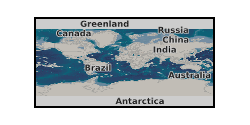
An oceanic two-phase plume model is developed to include bubble size distribution and bubble interactions, applied to the prediction of CO2 bubble plume and CO2 solution dynamics observed from the recent QICS field experiment in the Scottish sea at Ardmucknish Bay. Observations show bubbles form at between 2 and 12 mm in diameter, where the inclusion of the interactions within the simulations brings results of bubble plumes closer to that of the experiment. Under a given leakage flux, simulations show that the bubble size affects the maximum pCO2 dissolved in the water column, while the bubble interactions affect the vertical bubble distribution. The maximum modelled pCO2 increases from a background 360 ìatm to 400, 427 and 443 ìatm as CO2 injection rates increase from 80, 170 to 208 kg/day respectively at low tide. An increase of the leakage rate to 100% of the injection rate shows the maximum pCO2 could be 713 ìatm, approaching the mean pCO2 observed of 740 ìatm during the high leakage component of the experiment, suggesting that the flux may be greater than estimated due to the varied flux and activity across the pockmarks during the leakages. This is a publication in QICS Special Issue - International Journal of Greenhouse Gas Control, Peter Taylor et. al. Doi:10.1016/j.ijggc.2014.09.007.
-
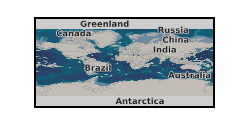
Carbon Capture and Storage (CCS) technologies are critical for the UK to achieve its an ambitious target to reduce CO2 emissions by 80% by 2050. The development of an accurate, cost efficient and scalable metering technology that could be deployed in the commercial scale transportation of CO2 by pipeline for CCS purposes is critical for the deployment of CCS. However, current technologies employed in metering CO2 flows by pipeline are unable to provide the required levels of accuracy, particularly in situations where the CO2 stream contains different levels of impurities. Accordingly, in this project we will conduct laboratory trials to assess meters for accurate flow measurements, and ultimately develop technical specifications for accurate flow metering for CCS applications. Grant number: UKCCSRC-C2-201.
-
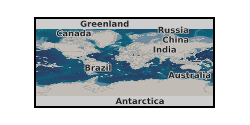
This poster on the UKCCSRC Call 2 project, Performance of Flow Meters with Dense Phase CO2 and CCS Recovery Streams, was presented at the Cardiff Biannual, 10.09.14. Grant number: UKCCSRC-C2-201.
-
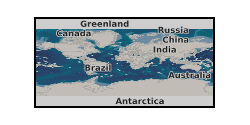
This poster on the UKCCSRC Call 2 project Performance of Flow Meters with Dense Phase CO2 and CCS Recovery Streams was presented at the CSLF Call project poster reception, London, 27.06.16. Grant number: UKCCSRC-C2-201. Captured carbon dioxide (CO2) from CCS operations needs to be transported to the storage location. Metering of the flow could be challenging due to the presence of impurities as well as unusual physical properties of the CO2 with impurities. The metering accuracy must be within the range of ±1.5% by mass according to the European Union Emission Trading Scheme (EU ETS) regulations. However, no investigations have been performed to evaluate the performance of flowmeters with pressurized CO2 at operational CCS conditions. The goal of project is to investigate the performance of Coriolis mass flowmeter with high CO2 content mixtures. Specific objectives of the project include: • To study the effect of impurities on the accuracy of the Coriolis flow meter. • To investigate the performance of Coriolis flow meter at conditions likely to happen in the CCS operations. • Evaluation of costs for the deployment of Coriolis flow meter in CCS operations.
-
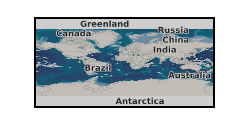
Fiscal metering could face several challenges during CO2 transport by pipelines due to the unusual physical properties of CO2 and CO2 mixtures. Coriolis flowmeters are an options to measure CO2 accurately in transport pipelines. However, the presence of impurities can affect the performance of the flowmeter. Therefore, the performance of a Coriolis flowmeter was evaluated using CO2 fluid with impurities in a mass flow-rig designed based on the gravimetric calibration in start / stop operations. In each test, the mass recorded by the Coriolis flowmeter was compared to the mass collected in the receiving facilities and measured using high accurate balance in order to obtain the relative deviation of the test. During the tests, in addition to the mass and volume flow rate, the operational pressure and temperature as well as velocity and density were recorded. The series of tests were conducted using different fluids, including: pure N2 (validation tests), pure CO2 (reference tests), pre-combustion mixture, post-combustion mixture, Oxyfuel-I mixture and Oxyfuel-II mixture. The recorded data as well as recorded and measured masses are available in the provided excel files for each investigated fluid. Grant number: UKCCSRC-C2-201
-
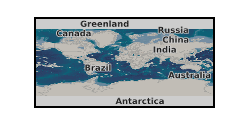
This presentation on the UKCCSRC Call 2 project Performance of Flow Meters with Dense Phase CO2 and CCS Recovery Streams was presented at the UKCCSRC Edinburgh Biannual Meeting, 15.09.2016. Grant number: UKCCSRC-C2-201.
-

Three borehole logs are presented that describe the material excavated from a slag deposit in Consett Co. Durham (ad pdf files). The boreholes were created by GeoSonic Ltd commissioned by Cardiff University in September 2017 as part of a UKRI funded project that explores CO2 uptake in slag. The drilling penetrated through 20 and 25m of material representing the extent of the heap to underlying natural ground. The methods used and samples recovered are described in Pullin et al., 2019 Environmental Science and Technology. 53 (16) 9502-9511. DOI: 10.1021/acs.est.9b01265. The deposited data include photographs of recovered material from one of the boreholes.
-
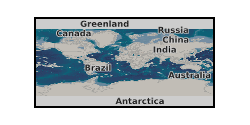
The data deposit includes results from 12 experiments that reacted carbon dioxide, seawater and limestone as a method of CO2 sequestration (as xlsx files). The data were obtained by Dr Huw Pullin, Cardiff University as part of a UKRI funded research project. Experiments were conducted under controlled temperatures (20degC), and CO2 pressures (5 and 50% v/v at 1 atm). The methods used are described in Xing et al., 2022 Chemical Engineering Journal. 431. 134096 DOI: 10.1016/j.cej.2021.134096
-

The North Sea Interactive (NSI) project was an 8-month NERC funded project led by Heriot-Watt University, in collaboration with the BGS and NOC. The aim of the project was to develop a new decision-support tool that would translate existing marine environmental data into an interactive mapping product for the offshore oil and gas industry. The objectives of the project were achieved through the integration of the North Sea Benthos database (UKBenthos) with NERC's regional North Sea marine sediment data (BGS) and layers of modelled hydrodynamics (NOC). Aligning the biological, chemical, geological and hydrodynamic datasets in a single GIS product provides the oil industry and government regulators with a practical means of accessing this important archive of environmental data. The North Sea Benthos database (UKBenthos) was developed by Heriot-Watt University on behalf of UKOOA (now Oil and Gas UK) in the 1980s. Alongside macrobenthos, the database includes sediment properties, concentrations of aromatic compounds, total oil and metals. It currently includes data from 1975 to 2011 from 237 platforms and is continually being updated as new survey results are received by Oil and Gas UK.
-
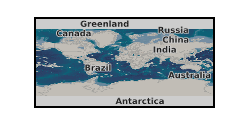
Simplified reservoir models are used to estimate the boundary conditions (pressure, temperature and flow) that are relevant to the primary aims of this project. A set of boundary conditions are defined at the wellhead that represent the behaviour of the store. Data relates to publication: Sanchez Fernandez, E., Naylor, M., Lucquiaud, M., Wetenhall, B., Aghajani, H., Race, J., Chalmers, H. Impacts of geological store uncertainties on the design and operation of flexible CCS offshore pipeline infrastructure (2016) International Journal of Greenhouse Gas Control, 52, pp. 139-154. https://www.scopus.com/inward/record.uri?eid=2-s2.0-84978197316&doi=10.1016%2fj.ijggc.2016.06.005&partnerID=40&md5=d567f0e06f561613554a1f1c2e230194 DOI: 10.1016/j.ijggc.2016.06.005
 BGS Data Catalogue
BGS Data Catalogue